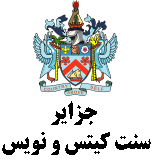کشورهای بدون نیاز به ویزا 2012
Visa Restriction Index 2012
Number of countries that can be entered without a visa by a citizen of:
Visa Restrictions
Visa restrictions are imposed by countries to control the crossing of their borders. Almost all countries now require visas from certain non-citizens who wish to enter (or leave) their territory.
A visa does not guarantee entry, however. It merely indicates that your passport and visa application have been reviewed by a consular officer at an embassy or consulate of the country you wish to enter, and that the officer has determined that you are generally eligible to enter the country for a specific purpose.
A visa allows you to travel to the destination country as far as the port of entry (airport, seaport or land border crossing) and ask the immigration officer to allow you to enter the country. In most countries the immigration officer has the authority to permit you to enter. He or she usually also decides how long you can stay for any particular visit.
Visa Requirements
It is important to find out before travelling whether you need a visa to enter your destination or transit country.
While visa restrictions are primarily based on citizenship, the holding of a residence permit may also be of importance. For example, if you are resident in any EU country that is part of the Schengen zone, you may travel visa-free throughout that zone.
To check whether you need a visa, you can search the IATA Timatic database which you can access here.
The following is an overview of selected countries taken from the Henley Visa Restrictions Index - Global Ranking 2012:
|
Rank
|
|
Score
|
Rank
|
|
Score
|
|
1
|
Denmark
|
169
|
11
|
Malta
|
156
|
|
2
|
Sweden
|
168
|
12
|
Liechtenstein
|
155
|
|
2
|
Finland
|
168
|
14
|
Malaysia
|
153
|
|
2
|
Germany
|
168
|
19
|
Hong Kong
|
147
|
|
3
|
United Kingdom
|
167
|
22
|
Israel
|
141
|
|
3
|
Netherlands
|
167
|
22
|
Brazil
|
141
|
|
3
|
France
|
167
|
29
|
St Kitts & Nevis
|
128
|
|
3
|
Belgium
|
167
|
49
|
Montenegro
|
94
|
|
4
|
Luxembourg
|
166
|
49
|
Russian Federation
|
94
|
|
4
|
Italy
|
166
|
50
|
South Africa
|
93
|
|
4
|
United States
|
166
|
52
|
Bosnia Herzogovina
|
87
|
|
5
|
Spain
|
165
|
54
|
Dominica
|
85
|
|
5
|
Japan
|
165
|
64
|
United Arab Emirates
|
70
|
|
5
|
Norway
|
165
|
69
|
Thailand
|
64
|
|
5
|
Portugal
|
165
|
82
|
India
|
51
|
|
5
|
Ireland
|
165
|
89
|
Vietnam
|
44
|
|
5
|
New Zealand
|
165
|
89
|
Egypt
|
44
|
|
6
|
Austria
|
163
|
92
|
China
|
41
|
|
6
|
Australia
|
163
|
96
|
Iran
|
37
|
|
6
|
Canada
|
163
|
98
|
Nepal
|
35
|
|
7
|
Switzerland
|
162
|
98
|
Lebanon
|
35
|
|
|
|
|
|
|
|
|
7
|
Greece
|
162
|
100
|
Pakistan
|
32
|
|
|
|
|
|
|
|
|
8
|
Singapore
|
161
|
103
|
Afghanistan
|
26
|
|
|
|
|
|
|
|
|
9
|
South Korea
|
160
|
|
|
|
|
|
|
|
|
|
|
|
10
|
Iceland
|
159
|
|
|
|
|
|
|
|
|
|
|
*Number of countries and territories which can be entered without a visa by a citizen of the respective country
The Schengen Area
The Schengen Agreement is a treaty signed between five of the ten member states of the European Community in 1985. It was supplemented by the Convention implementing the Schengen Agreement some five years later. It provided for the removal of systematic border controls between the participating countries.
Later on, the Treaty of Amsterdam incorporated the legal framework brought about meanwhile, the so-called Schengen-Acquis, by the agreement into the European Union framework, effectively making the agreement part of the EU and its modes of legislature.
Ireland and the United Kingdom opted out of Schengen's border control arrangements, while participating in certain provisions relating to judicial and police cooperation.
The borderless zone created by the Schengen Agreements, the Schengen Area, currently consists of twenty-two EU countries (Austria, Belgium, the Czech Republic, Denmark, Estonia, Finland, France, Germany, Greece, Hungary, Italy, Latvia, Lithuania, Luxembourg, Malta, Netherlands, Poland, Portugal, Slovakia, Slovenia, Spain, Sweden), plus Norway, Iceland and Switzerland, which by separate agreements fully apply the provisions of the Schengen acquis.
Bulgaria, Cyprus, and Romania are not yet full members of the Schengen area, since the border controls between them and the Schengen area are maintained until the EU Council decides that the conditions for abolishing internal border controls have been met. However, since the date of accession they do apply parts of the Schengen acquis, in particular in the area of police and judicial cooperation and of external border control.
The United Kingdom and Ireland have chosen to maintain border controls with other EU countries and are therefore outside the Schengen area (although they have been authorised to apply some of the provisions on police and judicial co-operation in criminal matters).
|













